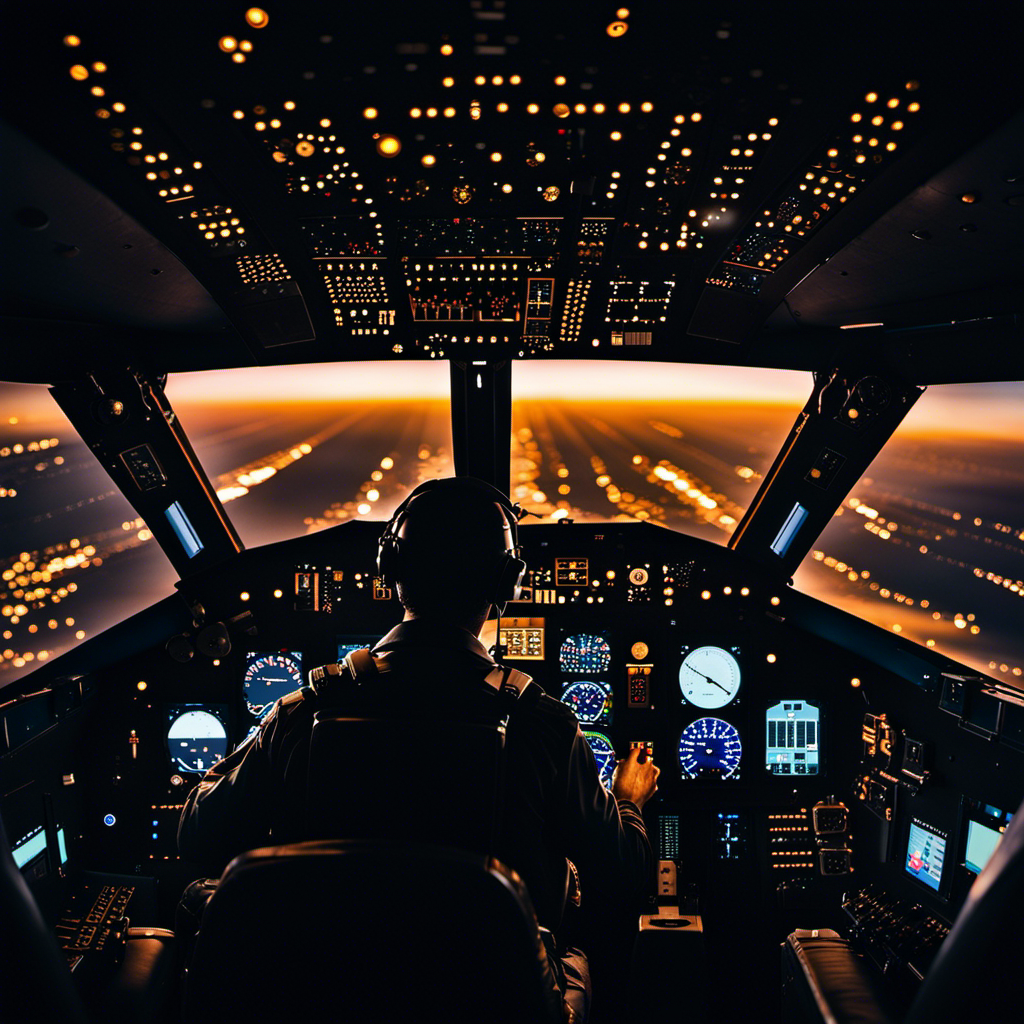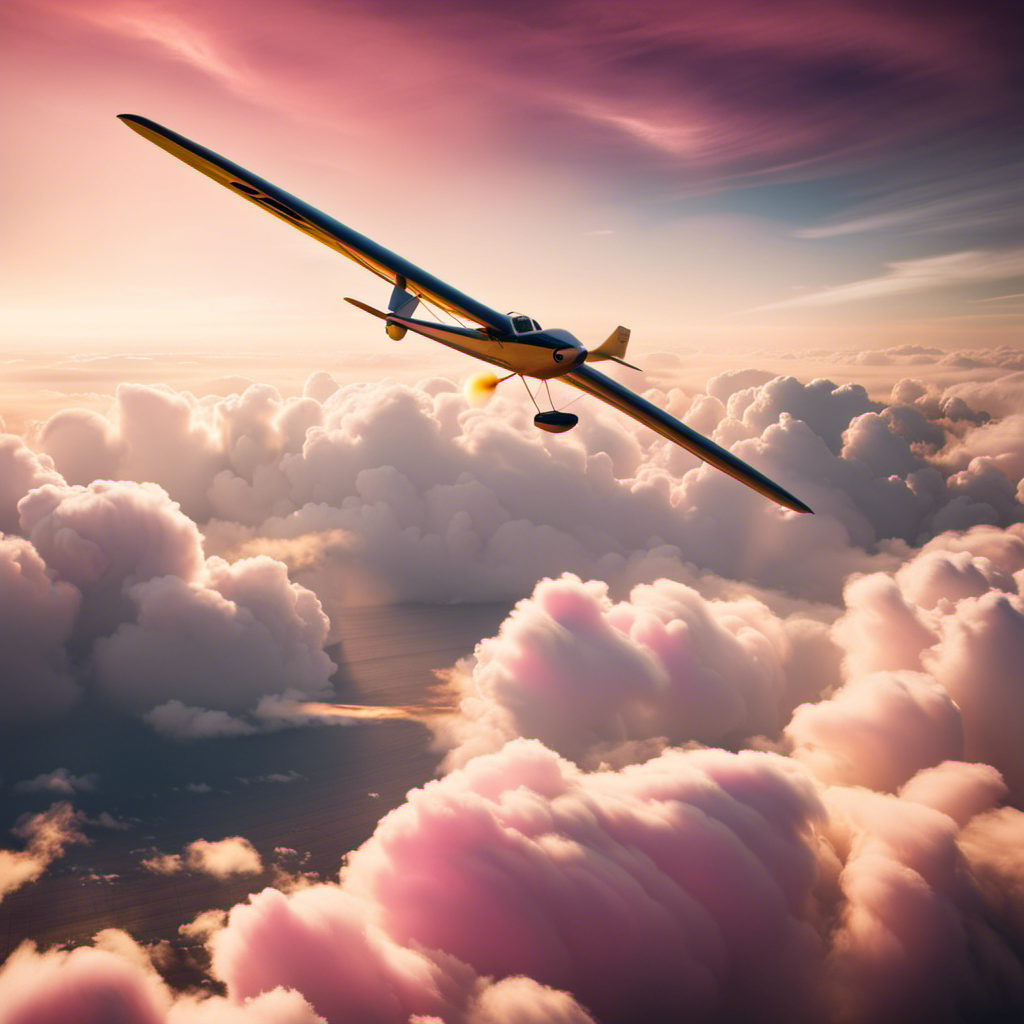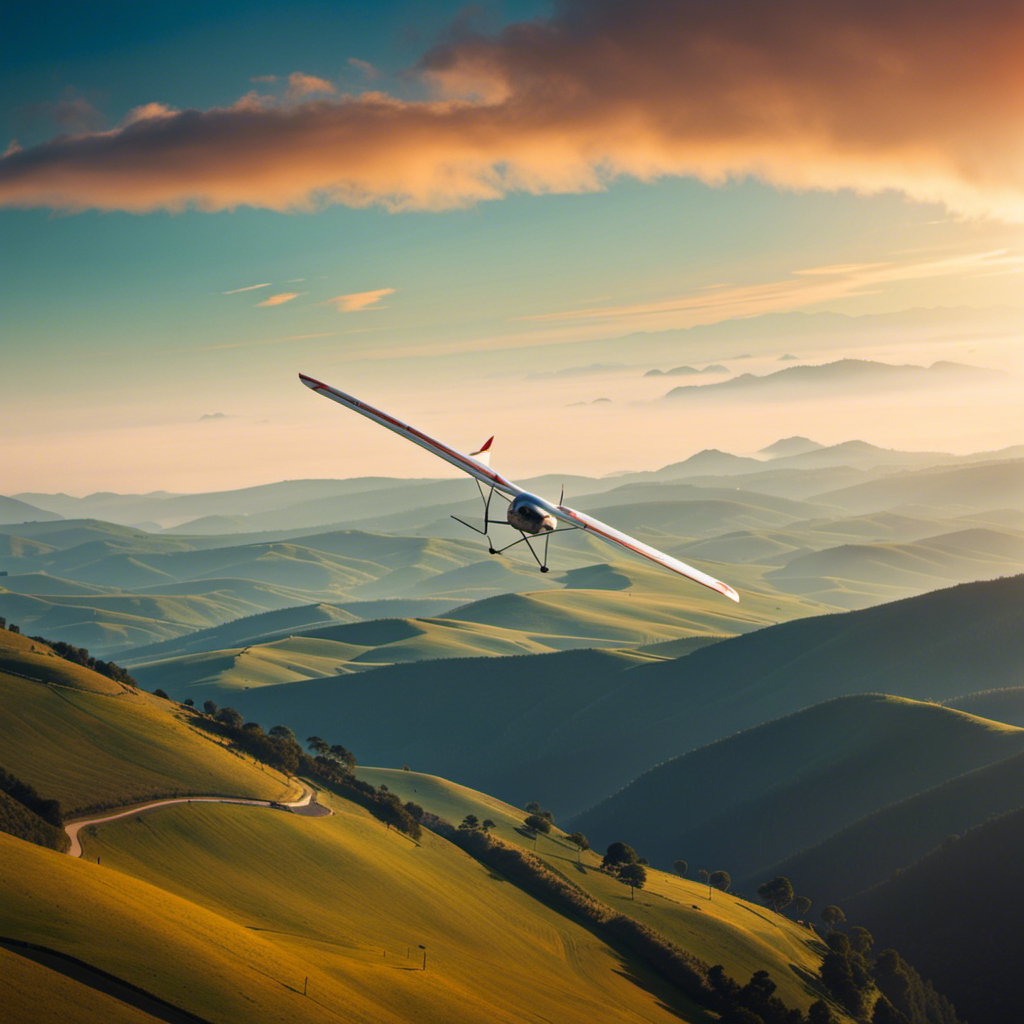As a pilot, I often wonder if it is really feasible to have visibility during nighttime flights. This is a genuine concern due to the challenges that come with flying in the dark.
In this article, we will explore the importance of night vision in aviation, the technology and instrumentation that assist pilots in flying at night, and the various factors that affect visibility during nighttime flights.
So, let’s shed some light on this topic and uncover the truth about pilots’ vision in the dark.
Key Takeaways
- Night vision equipment, such as goggles, enhances pilots’ vision in low-light conditions.
- Advanced cockpit instrumentation and technology are crucial for safe navigation at night.
- Reduced visibility and pilot fatigue are major challenges for night flying.
- Adhering to VFR regulations and using appropriate lighting equipment address visibility challenges and contribute to safe operations.
The Importance of Night Vision in Aviation
Pilots can’t rely solely on their regular vision at night; that’s why night vision is crucial in aviation. When flying in the dark, visibility is significantly reduced, making it difficult to see objects, terrain, and other aircraft.
Night vision equipment, such as night vision goggles, helps pilots enhance their vision in low-light conditions. These devices work by intensifying the available light and displaying it in a way that is visible to the human eye. By using night vision equipment, pilots can detect hazards, identify landmarks, and navigate safely during nocturnal operations.
Additionally, night flying can lead to pilot fatigue due to the altered sleep patterns and increased mental and physical workload. Therefore, having reliable night vision equipment is essential for mitigating the risks associated with pilot fatigue during nighttime flights.
Moving forward, cockpit instrumentation and technology for night flying play a vital role in ensuring the safety and efficiency of nighttime operations.
Cockpit Instrumentation and Technology for Night Flying
When flying at night, you’ll rely on advanced cockpit instrumentation and technology to navigate and maintain situational awareness. Cockpit lighting plays a crucial role in providing clear visibility of the controls and instruments.
Night vision devices, such as night vision goggles, enhance visibility by amplifying ambient light, making it easier to spot other aircraft and obstacles.
In addition to these tools, pilots also utilize other technologies like GPS and radar to accurately determine their position and avoid potential hazards.
The integration of these systems allows for precise navigation and enhances safety during nighttime flights.
As we explore the world of instrument flight rules (IFR) and nighttime navigation, it becomes evident that the combination of advanced cockpit instrumentation and technology is essential for pilots to safely operate aircraft in low-light conditions.
Instrument Flight Rules (IFR) and Nighttime Navigation
The integration of advanced cockpit instrumentation and technology is crucial for safe navigation during nighttime flights. When flying under Instrument Flight Rules (IFR) in dark conditions, pilots heavily rely on their instruments to maintain situational awareness and ensure a smooth flight.
Additionally, night vision goggles are commonly used to enhance visibility during low-light conditions. These goggles utilize advanced technology to amplify available light and improve a pilot’s ability to see in the dark.
In emergency situations, pilots must be prepared to execute specific procedures to ensure the safety of the aircraft and its occupants. These emergency procedures are practiced extensively during training to ensure pilots can respond quickly and effectively in high-stress situations.
Transitioning into the subsequent section about the role of aircraft lighting systems, it is important to consider how these systems further enhance night vision and contribute to safe nighttime operations.
The Role of Aircraft Lighting Systems
Aircraft lighting systems play a crucial role in enhancing visibility and ensuring safe operations during dark conditions. As a pilot, I rely on these advanced technologies to navigate through the night sky.
Here are five key elements of aircraft lighting technology that aid in night vision:
-
Runway lights: These bright lights illuminate the runway, guiding me during takeoff and landing.
-
Navigation lights: These red, green, and white lights help me identify other aircraft and determine their direction of travel.
-
Anti-collision lights: These flashing lights alert other pilots to my presence, enhancing safety and preventing mid-air collisions.
-
Landing lights: These powerful lights provide a focused beam to illuminate the area ahead during the approach and landing phase.
-
Cockpit lighting: The instrument panel and control panel lights allow me to read critical flight information and adjust settings easily.
With these advancements in night vision technology, pilots can confidently operate aircraft in low-light conditions. However, it is important to consider the impact of nighttime weather conditions on visibility.
Nighttime Weather Conditions and Their Impact on Visibility
In low-light conditions, pilots may encounter challenges due to factors like rain, fog, or haze affecting visibility. These nighttime visibility challenges can make it difficult to see and navigate effectively. However, one factor that can positively impact visibility is moonlight.
Moonlight can provide some illumination, allowing pilots to distinguish objects and terrain more easily. The amount of moonlight available can vary depending on the phase of the moon and other atmospheric conditions. It is important for pilots to be aware of the impact of moonlight on visibility and adjust their flying techniques accordingly.
Transitioning into the subsequent section about visual flight rules (VFR) and nighttime flying, it is crucial for pilots to adhere to specific regulations and procedures to ensure safe operations during low-light conditions.
Visual Flight Rules (VFR) and Nighttime Flying
Transitioning into nighttime flying, it’s important for pilots to understand and follow visual flight rules (VFR) to ensure safe operations. Nighttime visibility can pose challenges for pilots, as the reduced ambient light can make it difficult to spot objects and navigate accurately.
In order to address these concerns, VFR regulations provide guidelines for pilots to follow when flying at night. These regulations include requirements such as maintaining a certain distance from clouds, operating at specific altitudes, and using appropriate lighting equipment. By adhering to these rules, pilots can enhance their visibility and reduce the risk of accidents or collisions.
Now, let’s delve into the next section to explore the use of night vision goggles (NVGs) by pilots, which further enhances their visibility in low-light conditions.
The Use of Night Vision Goggles (NVGs) by Pilots
When using night vision goggles, pilots can greatly improve their visibility in low-light conditions. Night vision technology advancements have made these goggles essential tools for pilots, especially in military applications.
The goggles work by amplifying the available light, allowing pilots to see clearly in darkness. They utilize infrared technology to detect and amplify the infrared light emitted by objects, enhancing the pilot’s ability to see even in complete darkness.
The military has been utilizing night vision goggles for years, as they provide a significant advantage in nighttime operations, such as surveillance and target acquisition. These goggles have evolved over time, becoming more lightweight, durable, and providing better image resolution.
With the advent of these advancements, pilots can now rely on night vision goggles to navigate safely and effectively in the dark.
Transitioning to the next section, human factors and nighttime vision play crucial roles in utilizing night vision goggles effectively.
Human Factors and Nighttime Vision
The effective use of night vision goggles relies on the factors of human vision and the darkness of the environment. Human performance plays a crucial role in adapting to darkness and enhancing visual capabilities. When it comes to navigating the night sky, pilots must rely on their ability to adjust to low light conditions. Here are four key factors that contribute to human performance and adaptation to darkness:
- Visual acuity: The ability to see clearly and distinguish objects in low light conditions is essential for pilots to effectively operate aircraft.
- Peripheral vision: Pilots must maintain awareness of their surroundings, including any potential hazards, by utilizing their peripheral vision.
- Depth perception: Accurate depth perception is crucial for judging distances and making precise maneuvers, especially when visibility is reduced.
- Color perception: Although limited at night, being able to identify and interpret colors can provide valuable information during nighttime operations.
Understanding these factors allows pilots to optimize their use of night vision goggles and enhance their ability to navigate safely in low light conditions.
Now, let’s delve into nighttime emergency procedures and safety measures.
Nighttime Emergency Procedures and Safety Measures
In case of an emergency at night, it’s important for aviators to be prepared and follow the proper safety protocols. Nighttime emergency procedures and safety measures are crucial to ensure the well-being of both the pilot and passengers.
When faced with a nighttime emergency, pilots must have a solid understanding of their aircraft’s systems and be trained to handle various scenarios. They must also be equipped with proper night vision equipment, such as night vision goggles, to enhance their visibility in low light conditions.
Additionally, pilots should maintain situational awareness by using instruments and external visual cues to navigate and communicate effectively. By adhering to these nighttime emergency procedures and safety measures, aviators can mitigate risks and ensure a safe outcome.
Moving forward, the role of air traffic control in nighttime operations is vital in optimizing safety and coordination.
The Role of Air Traffic Control in Nighttime Operations
You should rely on air traffic control to provide essential guidance and coordination during nighttime operations. Nighttime air traffic control plays a crucial role in ensuring the safety and efficiency of flights when visibility is limited. One of the key tools that air traffic controllers use is night vision technology, which allows them to see aircraft and other objects in low light conditions. This technology enhances their ability to detect potential conflicts and provide accurate instructions to pilots.
To emphasize the importance of air traffic control in nighttime operations, consider the following table:
| Role of Air Traffic Control in Nighttime Operations |
|---|
| Providing guidance and coordination |
| Monitoring aircraft movements |
| Detecting potential conflicts |
| Communicating with pilots |
Pilot Training and Certification for Night Flying
Make sure to undergo proper training and certification to safely navigate through the darkness as a pilot. Night flying presents unique challenges and requires specialized skills.
As a pilot, it is crucial to be well-prepared and knowledgeable about the potential risks and mitigations associated with night operations. One important consideration is pilot fatigue. Flying at night can be more mentally and physically demanding, leading to increased fatigue. This can impact decision-making and reaction times, making proper training even more essential.
Additionally, night vision devices play a vital role in enhancing visibility during night flights. These devices, such as night vision goggles, help pilots see in low-light conditions, improving situational awareness and safety.
By undergoing thorough training and certification, pilots can effectively mitigate the risks associated with night flying and ensure a safe and successful journey.
Now let’s explore the challenges and considerations for cross-country night flights.
Challenges and Considerations for Cross-Country Night Flights
Navigating through the darkness presents unique challenges and requires specialized skills, which is why proper training and certification are crucial for cross-country night flights. As a pilot, I understand the importance of taking into account various considerations when flying at night.
One of the major challenges is the limited visibility, which can make it difficult to discern objects and landmarks. This requires pilots to rely heavily on their instruments and navigation systems to maintain the correct heading and altitude. Additionally, the lack of natural light can affect depth perception, making it harder to judge distances accurately.
Another consideration is the potential for adverse weather conditions, which can further complicate the already challenging task of flying at night. These challenges highlight the need for thorough training and preparation to ensure safe and successful cross-country night flights.
Transitioning into the subsequent section about ‘the role of runway lighting and approach systems,’ it is important to discuss how these elements help pilots navigate and land safely in the darkness.
The Role of Runway Lighting and Approach Systems
As a pilot, navigating through the darkness of the night sky can be a daunting task. However, thanks to advanced technology and well-designed runway lighting and approach systems, we are equipped to handle the challenges.
Runway visibility is crucial for a safe landing, especially in low light conditions. That’s why airports invest in state-of-the-art lighting systems to guide us during the final approach. These systems include runway edge lights, centerline lights, and touchdown zone lights, all strategically placed to provide us with visual cues as we descend.
In addition to runway lighting, landing aids such as Instrument Landing Systems (ILS) and Precision Approach Path Indicators (PAPI) further enhance our ability to align with the runway and make a smooth landing.
With these sophisticated tools at our disposal, we can navigate the night sky with confidence and precision.
Now, let’s explore some tips for passengers flying at night.
Tips for Passengers Flying at Night
Passengers can enhance their nighttime flying experience by adjusting their sleep schedule and staying hydrated throughout the flight. Here are some tips to ensure passenger comfort and a restful journey:
- Use sleep aids: Consider using sleep aids such as eye masks, earplugs, or neck pillows to promote relaxation and better sleep during the flight.
- Dress comfortably: Opt for loose-fitting clothing and layers to adapt to the varying cabin temperatures.
- Stay hydrated: Drink plenty of water to prevent dehydration, as the dry cabin air can cause discomfort.
By following these tips, passengers can maximize their comfort and improve their sleep quality during nighttime flights.
Looking ahead, the future of nighttime aviation technology and innovation holds exciting possibilities for further enhancing the passenger experience.
The Future of Nighttime Aviation Technology and Innovation
The future of nighttime aviation technology and innovation holds exciting possibilities for further enhancing the passenger experience, with advancements in lighting systems and navigation tools.
One area of focus is nighttime drone operations, which have seen a significant increase in recent years. Drones equipped with advanced sensors and cameras can provide valuable data and surveillance during nighttime operations, such as search and rescue missions or monitoring critical infrastructure.
Additionally, bioluminescent technology in aviation is a promising area of development. Inspired by the natural phenomenon seen in marine organisms, researchers are exploring the use of bioluminescent materials for aircraft lighting. These materials could potentially provide a more efficient and environmentally friendly alternative to traditional lighting systems, while also enhancing visibility for pilots and improving safety during nighttime flights.
As technology continues to advance, the future of nighttime aviation looks brighter than ever.
Frequently Asked Questions
What are the different types of aircraft lighting systems used during nighttime flying?
There are several types of aircraft lighting systems used during nighttime flying. These include navigation lights, landing lights, taxi lights, and anti-collision lights. Each type serves a specific purpose to ensure visibility and safety in the dark.
How do nighttime weather conditions affect a pilot’s visibility?
Nighttime visibility can be significantly impacted by weather conditions. Darkness, combined with rain, fog, or snow, can severely limit a pilot’s ability to see. It is crucial for pilots to rely on their aircraft’s instruments in such situations.
What are the human factors that can impact a pilot’s nighttime vision?
Fatigue and age-related changes can impact a pilot’s nighttime vision. These factors can affect visual acuity, depth perception, and contrast sensitivity, making it more challenging to see and interpret objects in low-light conditions.
What are some emergency procedures and safety measures specific to nighttime flying?
In emergency situations, pilots must be prepared for an emergency landing. Safety measures such as using night vision goggles and relying on instruments for nighttime navigation are crucial for a successful flight.
How does air traffic control assist pilots during nighttime operations?
During nighttime operations, communication between pilots and air traffic control is crucial for safe and efficient flying. Technology plays a vital role in enhancing visibility for pilots, enabling them to navigate and avoid obstacles effectively.
Conclusion
In the darkened skies, pilots soar with confidence, their night vision guiding their every move. The cockpit instrumentation, a symphony of lights and technology, aids in the navigation through the black abyss.
With the guidance of Instrument Flight Rules and the dance of aircraft lighting systems, pilots conquer the challenges of nighttime weather conditions. From the gleam of runway lights to the precision of approach systems, every detail is meticulously crafted for safety.
As passengers embark on nocturnal journeys, they can rest assured, knowing that the future of nighttime aviation holds even greater technological marvels.
With a heart that soars as high as the skies, Aria, affectionately known as “Skylark,” is the driving force behind Soaring Skyways. Her journey into the gliding world began as a young dreamer gazing up at the soaring birds, yearning to experience the weightlessness and freedom they embodied. With years of experience both in the cockpit and behind the scenes, Aria’s commitment to the gliding community is unwavering.










